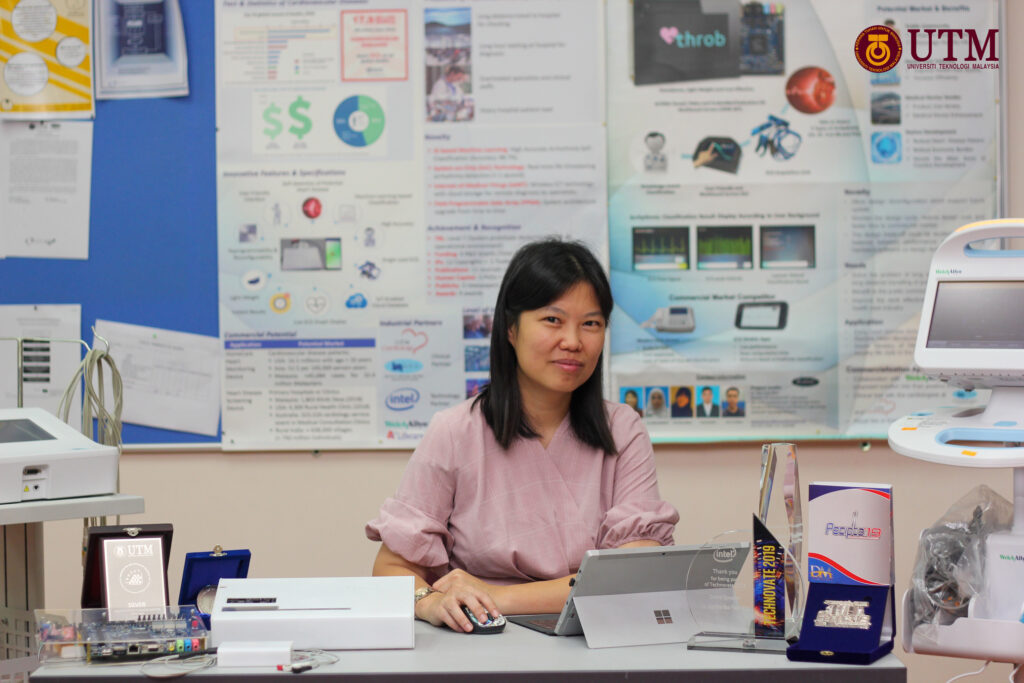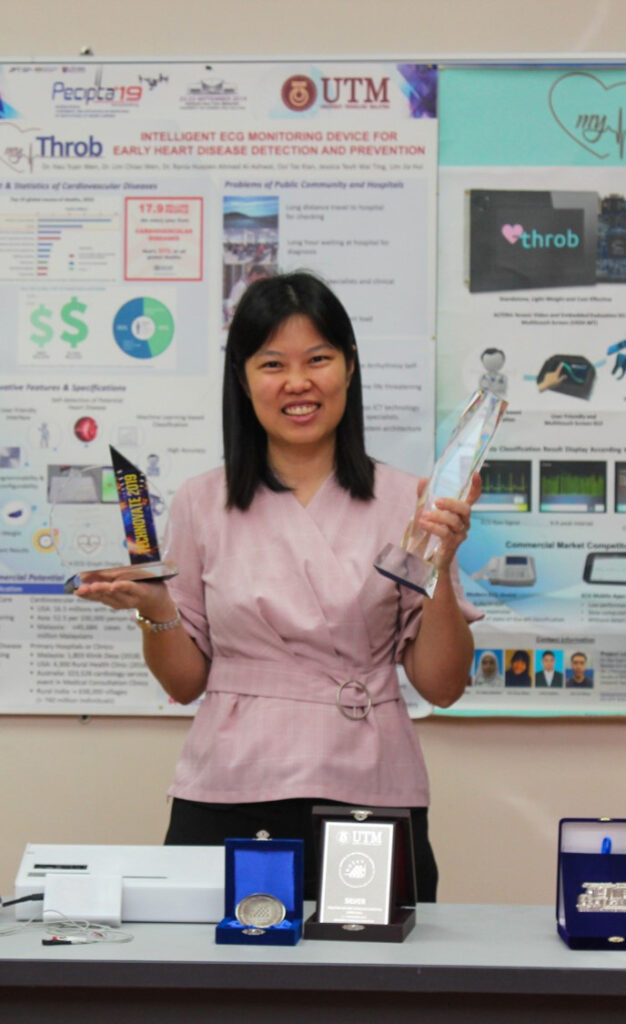What inspired you to be a researcher and inventor?
The main inspiration is I always have a strong believe that Malaysia never lack of local talent and we also have a high capability in terms of Science and Technology compared to other developed countries. Therefore I become a researcher and wish to prove our capability by inventing something that really can bring benefit to human mankind. I treat this as my responsibility and I would be very proud if we could invent something as a Malaysia home-grown product which could bring benefit to our local society.
Tell us more about your product and myThrob. According to World Health Organization (WHO), there are 17.9 million people die every year due to cardiovascular diseases. myThrob is a smart heart disease screener which support self classification of many life-threatening arrhythmia (irregular heart
beat) using single-lead electrocardiograms (ECG). This invention combines few state-of-the-art machine learning algorithm based on Artificial Intelligence (AI), together with cutting edge technologies of Internet-of-Medical-Things (IoMT), System-on-Chip (SoC), and Field Programmable Gate Array (FPGA).
The main selling point of myThrob compared to existing heart monitor at commercial market is it supports the self-classification with real-time performance using light-weight and portable device. Though most of commercial wearable ECG monitors also support arrhythmia classification, they are heavily rely on the Internet connectivity, which the rural area or outskirt region may not have this well ]established infrastructure. Whereas for myThrob, regardless the user is with or without Internet, myThrob could still classify the abnormal heart rhythm with good accuracy. A frequent screening of patient heart condition with myThrob will able to detect arrhythmia or heart rhythm abnormality at early stage which is an important precursor of potential serious heart diseases. As a result, a prompt medical response can be taken before the serious onset of heart disease to increase the patient’s survival rate.
Please do share with us your journey as an inventor. Do share the challenges you faced and how you overcome it.
As invention of myThrob requires multi-disciplinary knowledge and expertise, the main challenge of this journey is the communication with cardiologists and medical specialists, as we are speaking in totally different languages. While the medical specialists speak all medical term, we as a researchers speak all technical technology terms. Therefore both parties facing great difficulty to understand each other to solve the existing clinical problems. However, luckily I have a very good collaborator, Dr. Lim Chiao Wen, who is a cardiologist from UiTM Sungai Buloh. With her great patience and good commitment, therefore we overcome all the communication barriers and finally achieve to the current stage. The next challenge is we face very stiff competition to get the national research funding to hire researchers and to purchase research equipments. Thanks to the Universiti Teknologi Malaysia by providing institutional research funding, and UTM-IJN Cardiovascular Engineering Centre by providing flagship grant, therefore the research team have some seeding fund to kick-start the research activities and eventually generate few research inventions.
What is your aspirations for the future?
I wish to have a change of mindset of Malaysia industries while having collaboration with universities to adopt the university invention toward commercialization. With that, the Malaysia government may consider to establish a good and structured ecosystem by referring to industry[1]university collaboration model and culture in the other developed countries. In addition to that, I also wish the Malaysia government could update certain policy for example increase the monthly research allowance so that we could attract more local talents to pursue their higher education in postgraduate studies, as human capital is the most important asset in research activities, as well as the flexibility in research grant planning.


